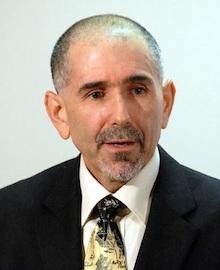Why tapping location intelligence closes the loop on customer-led marketing
- 22 April, 2016 12:47

pinpoint
Location intelligence is finally hitting the mainstream as a wide range of industries and marketers start clueing into the importance of contextual data on their customer experiences, products and services.
That’s the view of Pitney Bowes MD of geospatial solutions, Joe Francica, who sits between the vendor’s field sales and product management teams. With a background in geology, Francica has spent the past 30 years in and around geospatial technology, first in computer science, then in software marketing.
Early adopters of location intelligence quickly understood the value of geospatial because they were industries naturally based in geography such as real estate, transport and logistics, he claims.
But what’s become apparent in recent years is the competitive advantage that can come from making the most of location intelligence in a much wider array of sectors. Francica notes a host of industries now trying to come to terms with the velocity of location-based data hitting them, including banking and finance, retail and insurance.

“All of these are now inundated with these data streams, whether it’s transactional, social media, or risk data, and all are now finding it’s a necessity to leverage location data for competitive advantage,”he says.
As a result, Francica believes we’re on the cusp of mass adoption, largely “because people have been forced to adopt”.
“There’s a reason why Google got into mapping, or why on Facebook you can check-in to your location: All this data is being gathered for a purpose,” he said. “That’s so much so, people like Twitter resell data because it has such good location context around it.”
To point out just how varied the use cases are for location intelligence, Francica notes the vendor’s work with insurance clients on accurately pinpointing where a customer residence and claim is located. This has a huge impact on their ability to underwrite a policy and bottom line.
Another example is the telco space, where providers rely on streaming location data from mobile phone signals to understand the strength of their mobile signals in areas just 1km squared, and can then plan network expansion and optimisation accordingly.
Retail is also tapping into location, and Francica highlighted Domino’s Australia use of Pitney Bowes’ location intelligence to understand the population areas each of its franchise stores covers and to help plot out and negotiate new store expansion.
The Internet of Things and sensor-based intelligence adds to the variety of data on offer, and Francica highlights phones, social media and telematics as other valuable sources.
“It’s also about recognising these new data streams will impact the way you manage and store information and the way you need start looking at how to extract valuable information coming from those streams,” he warns. “It’s not just storage, but analysing data quickly then a reporting mechanism to get an answer.”
How location is benefitting marketers
From a marketing perspective, location intelligence is critical to helping meet the marketers’ desire for customer context.
“Contextual marketing is a big deal and we’re hearing that a lot – where is the client located and what is around them,” Francica says. “It’s not just about demographics anymore, it’s gaining a more dynamic picture of the situation. We want to know what that individual has been doing recently, where they purchased their last meal, checked-in, the type of trip they’re on, and gain a true authoritative view of that customer.”
In response, Pitney Bowes is endeavouring to stitch together several of its technologies, including geospatial and location analytics, to help clients gain a single view of the customer that can then be used to personalise communications, Francica says. And all of that starts by taking a piece of location information, such as name and address.
“We realise we have to go through number of different stages – address cleansing and validation, understanding how to geo-enrich address with other data elements, such as transactional, with restaurant purchase,” he explains. “From there, it’s looking at an omni-channel approach.”
The reality today, however, is brands only have pieces of the contextual pie. Francica says they could be good at understanding location in terms of direct mail, for example, but don’t have a single point of truth on a customer that can bring together all communications.
“We want to go backwards to that single point of truth and engage them every step of the way, first by understanding address, then context with location-based info, which could be demographics or psychographics, then to personalise communication in most effective way,” he says.
Despite predictions of mainstream acceptance, and the rise of location data intelligence within enterprise platforms today, Francica says plenty of work still need to be done to get people to think spatially.
“We ask spatial questions every day, just don’t realise it,” he claims. “For example, a realtor might ask for all class A office space in a 3-mile radius, and the traffic volumes in the last 30 days – they are spatial questions.”
But he does see marketers getting ever-more sophisticated in using location intelligence as they move from pure demographic and psychographic understandings of the customer, to sentiment-based analysis.
“Thanks to real-time social media data, marketers are beginning to understand what people say about their products and services in a time framework that has more immediacy,” Francica says. “If I know what a client is saying, within a contracted time period, can I reach back to that client with some communications that is relevant, has context and will have meaning for them.
“The fact that data has more immediacy to it is really engaging marketers in a much more dynamic framework.”
And that could be what finally gets marketers to the holy grail of customer-led marketing: One-to-one, personalised and real-time engagement.
Follow CMO on Twitter: @CMOAustralia, take part in the CMO conversation on LinkedIn: CMO ANZ, join us on Facebook: https://www.facebook.com/CMOAustralia, or check us out on Google+: google.com/+CmoAu

